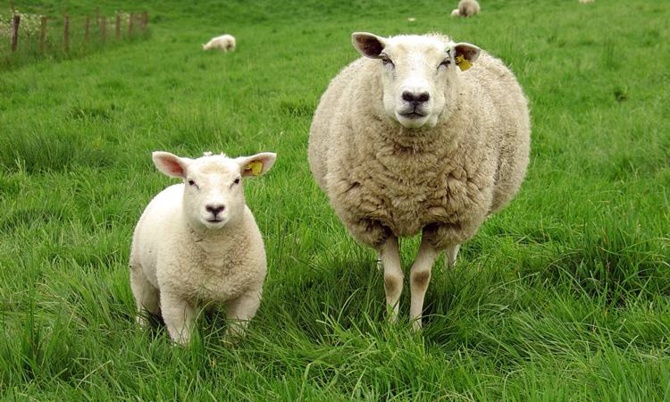The most important process in the pre-treatment of woolen products in the form of fabric or fabric is the washing process. Foreign substances on the wool can be classified in various ways:
- Natural impurities: Animal's sweat, oil, urine, etc.
- Adhering soils: garbage, thorns, grasses, sand, etc.
- Subsequent contamination: Dust, dust, oil from machinery etc. Washing processes are carried out in order to remove these contaminants from the woolen products before finishing. The most important points to be considered when washing wool products are:
Ir Wool products show felting properties in the face of excessive movement and mechanical effects.
Astır Wool products are susceptible to basic processes, especially in high temperatures. Working with strong basic solutions (above pH 10) during the finishing process of woolen products, basic operations at high temperatures (above 55 ° C), excessive work and mechanical stresses should be avoided. Otherwise, the flake layer on the surface of the wool fiber will be damaged. Thus, the quality of wool decreases. It also consists of unwanted complex structure called felting, which penetrates into each other due to excess movement and temperature. Felting causes large amounts of fiber to be broken and damaged during yarn production. In fabric form, it prevents the production of delicate and draped fabrics in desired quality.
Carbonization Process and Purpose In the wool taken from the back of the sheep, there are herbal residues such as grasses, pistachios and thorns from the nature. When the wool is washed, some of these herbal residues move away. It is necessary to remove the wool fiber from these plants. Mechanical processes to remove the herbal residues from the wool can not give the desired result and cause damage to the wool fiber. Therefore, the method that can be applied without damaging the wool fiber is to burn and burn the vegetable residues from a strong acid. The process of burning (carbonizing) by using the effect of heat by passing the vegetable residues through the strong acid solution is called carbonization. The fact that the wool fiber was not damaged by acids caused the carbonization process to be preferred. Carbonization of the wool can be done in the form of fibers, tops, yarns and fabrics. However, as the fragility increases during the yarn making process and the percentage of waste increases, it is not preferred to carbonize in fiber form. It also has a higher cost than carbonization in fabric form. Carbonization of the wool to be mixed with cotton and viscose should be made in the form of fibers. It is preferred to carbonize in the form of fabric in our country and in the world. Carbonization is a process that should be performed as carefully and carefully as pre-treatment of woolen products. This process must be done properly as carbonation process affects the dyeing properties of the woolen product. Otherwise, proper painting becomes difficult.
QUALITY WOOL PROCESS

The most important process in the pre-treatment of woolen products in the form of fabric or fabric is the washing process. Foreign substances on the wool can be classified in various ways:
- Natural impurities: Animal's sweat, oil, urine, etc.
- Adhering soils: garbage, thorns, grasses, sand, etc.
- Subsequent contamination: Dust, dust, oil from machinery etc. Washing processes are carried out in order to remove these contaminants from the woolen products before finishing. The most important points to be considered when washing wool products are:
Ir Wool products show felting properties in the face of excessive movement and mechanical effects.
Astır Wool products are susceptible to basic processes, especially in high temperatures. Working with strong basic solutions (above pH 10) during the finishing process of woolen products, basic operations at high temperatures (above 55 ° C), excessive work and mechanical stresses should be avoided. Otherwise, the flake layer on the surface of the wool fiber will be damaged. Thus, the quality of wool decreases. It also consists of unwanted complex structure called felting, which penetrates into each other due to excess movement and temperature. Felting causes large amounts of fiber to be broken and damaged during yarn production. In fabric form, it prevents the production of delicate and draped fabrics in desired quality.
Carbonization Process and Purpose In the wool taken from the back of the sheep, there are herbal residues such as grasses, pistachios and thorns from the nature. When the wool is washed, some of these herbal residues move away. It is necessary to remove the wool fiber from these plants. Mechanical processes to remove the herbal residues from the wool can not give the desired result and cause damage to the wool fiber. Therefore, the method that can be applied without damaging the wool fiber is to burn and burn the vegetable residues from a strong acid. The process of burning (carbonizing) by using the effect of heat by passing the vegetable residues through the strong acid solution is called carbonization. The fact that the wool fiber was not damaged by acids caused the carbonization process to be preferred. Carbonization of the wool can be done in the form of fibers, tops, yarns and fabrics. However, as the fragility increases during the yarn making process and the percentage of waste increases, it is not preferred to carbonize in fiber form. It also has a higher cost than carbonization in fabric form. Carbonization of the wool to be mixed with cotton and viscose should be made in the form of fibers. It is preferred to carbonize in the form of fabric in our country and in the world. Carbonization is a process that should be performed as carefully and carefully as pre-treatment of woolen products. This process must be done properly as carbonation process affects the dyeing properties of the woolen product. Otherwise, proper painting becomes difficult.
Tümü
